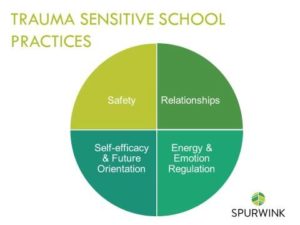
Early traumatic experiences can have a deep and lasting impact on how children learn, grow, and see the world. It can interfere with a child’s sense of safety and security, ability to seek and maintain friendships, manage emotions, and the child’s belief in him or herself. 
With the devastating impacts of the opiate epidemic increasing rates of childhood neglect, abuse, and parental loss, and the increased awareness of how early childhood adversity and trauma affect student learning, educators and school administrators are asking:
- What can my school do to help children who have experienced trauma?
- How can I help children who have experienced trauma heal and build resilience?
With deep experience serving children who have experienced trauma, Spurwink has increasingly been asked to partner with local schools to develop strategies that address the needs of students affected by trauma. In response, Spurwink developed the Trauma Sensitive School Practices (TSSP) model. This training and curriculum is designed to:
- Increase educator awareness regarding the prevalence of Adverse Childhood Experiences (ACES)
- Improve educator understanding of how ACEs can influence student development, and
- Provide concrete practices that educators can use to address the primary areas affected by trauma.
Spurwink provides a two hour introductory training that helps educators improve their understanding of early childhood trauma, the impact of trauma on student behavior and learning, and quick tips for ways to address common trauma-based behaviors in the classroom.
The full TSSP model includes multiple trainings and on-site coaching, and is currently being implemented by RSU 10 in Rumford, Maine. The model begins with a school-wide introduction and training on trauma and its impact on students and learning. This model includes school wide, classroom wide, and individual interventions designed to bolster student success. The model provides educators concrete tools to use in the classroom and with individual students while they are developing a deeper understanding of how trauma influences student behavior.
Anticipated outcomes of the program include:
- Reduced challenging behaviors, and office disciplinary reports
- Increase students’ feelings of safety and security in school.
- Improve student connection educators and other school members.
- Improved student learning results
Interested in learning more about the model and how your school might participate? Contact Spurwink at 888-889-4903 or click here to contact us: spurwink.org/contact/.
